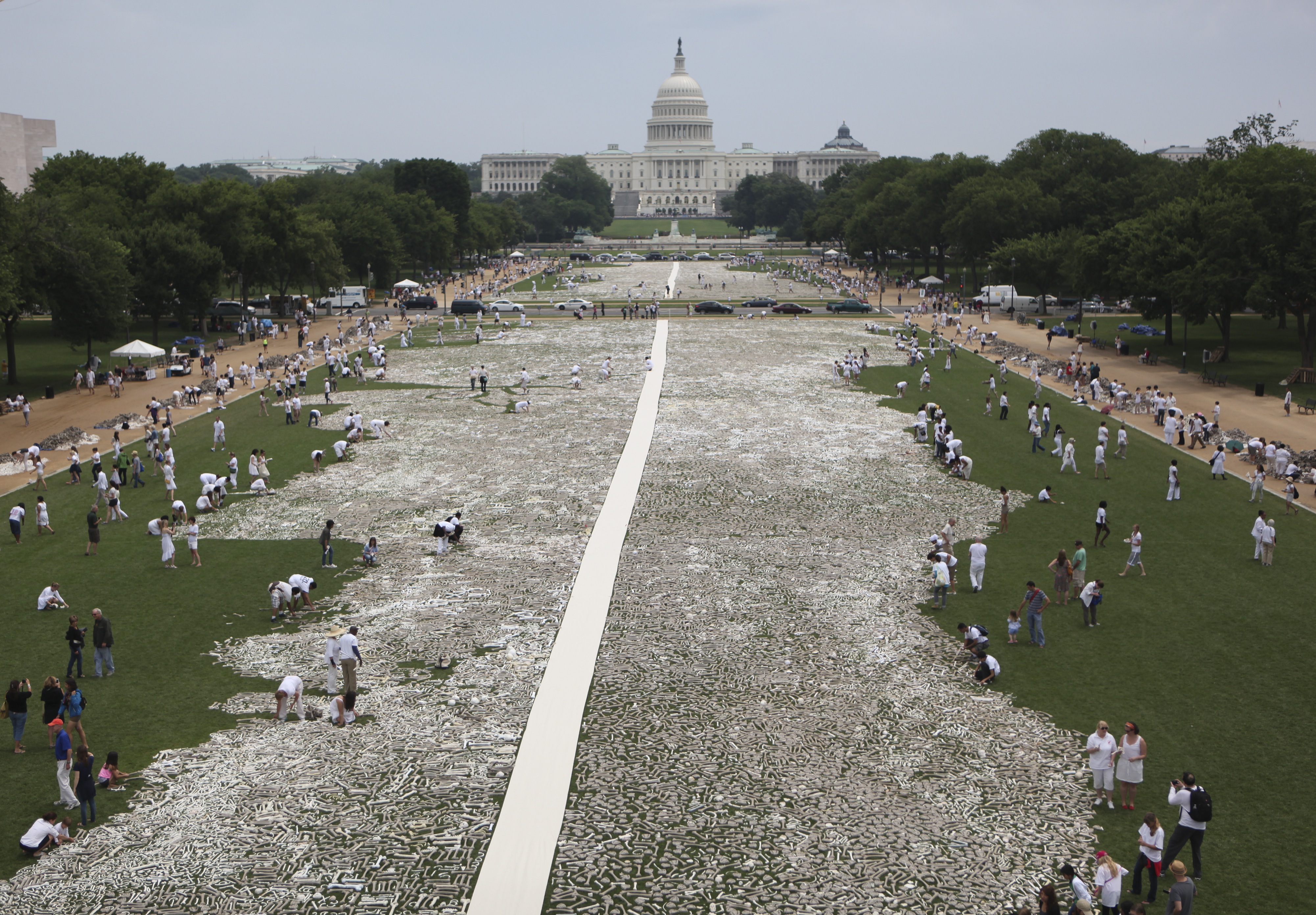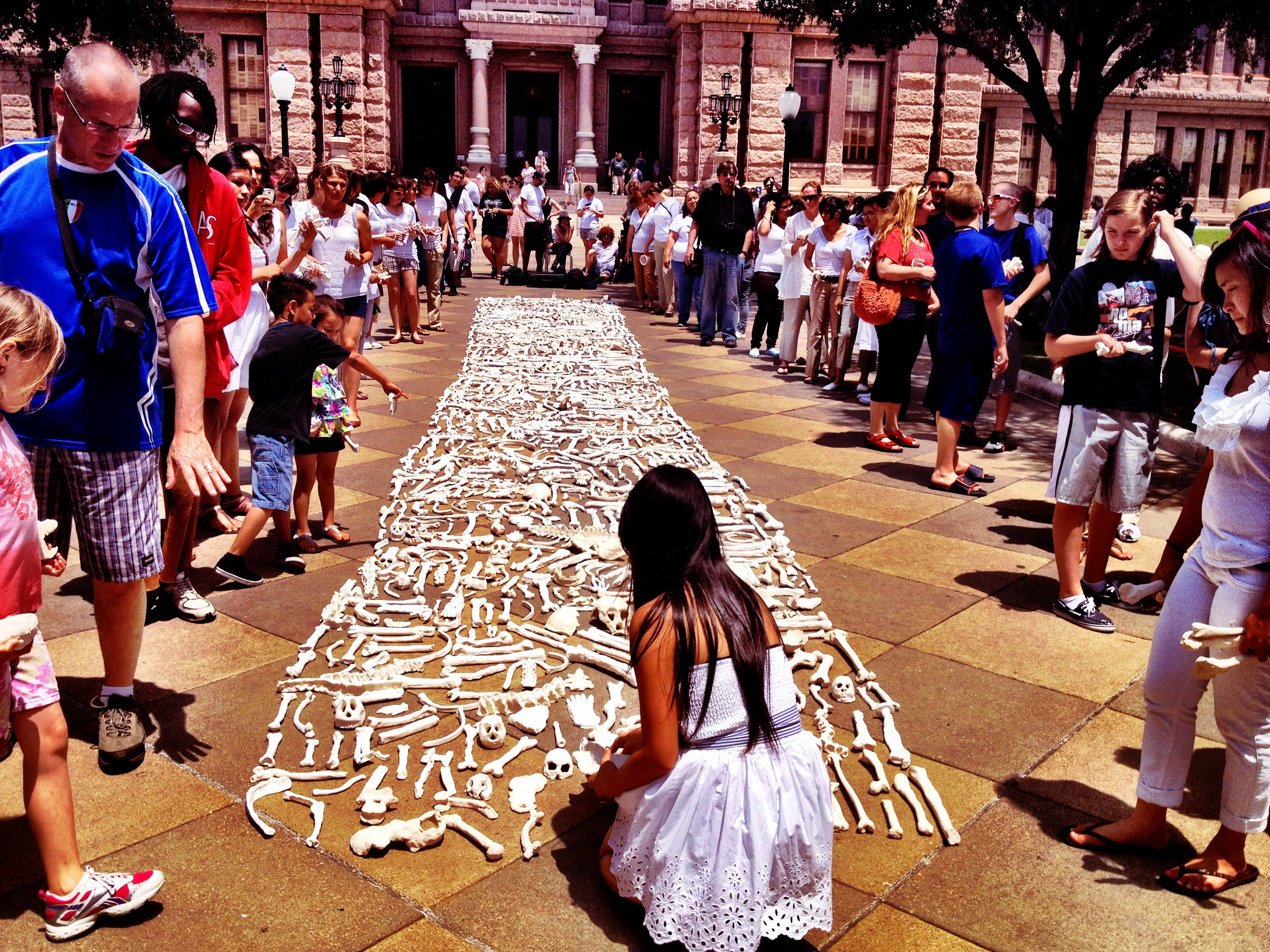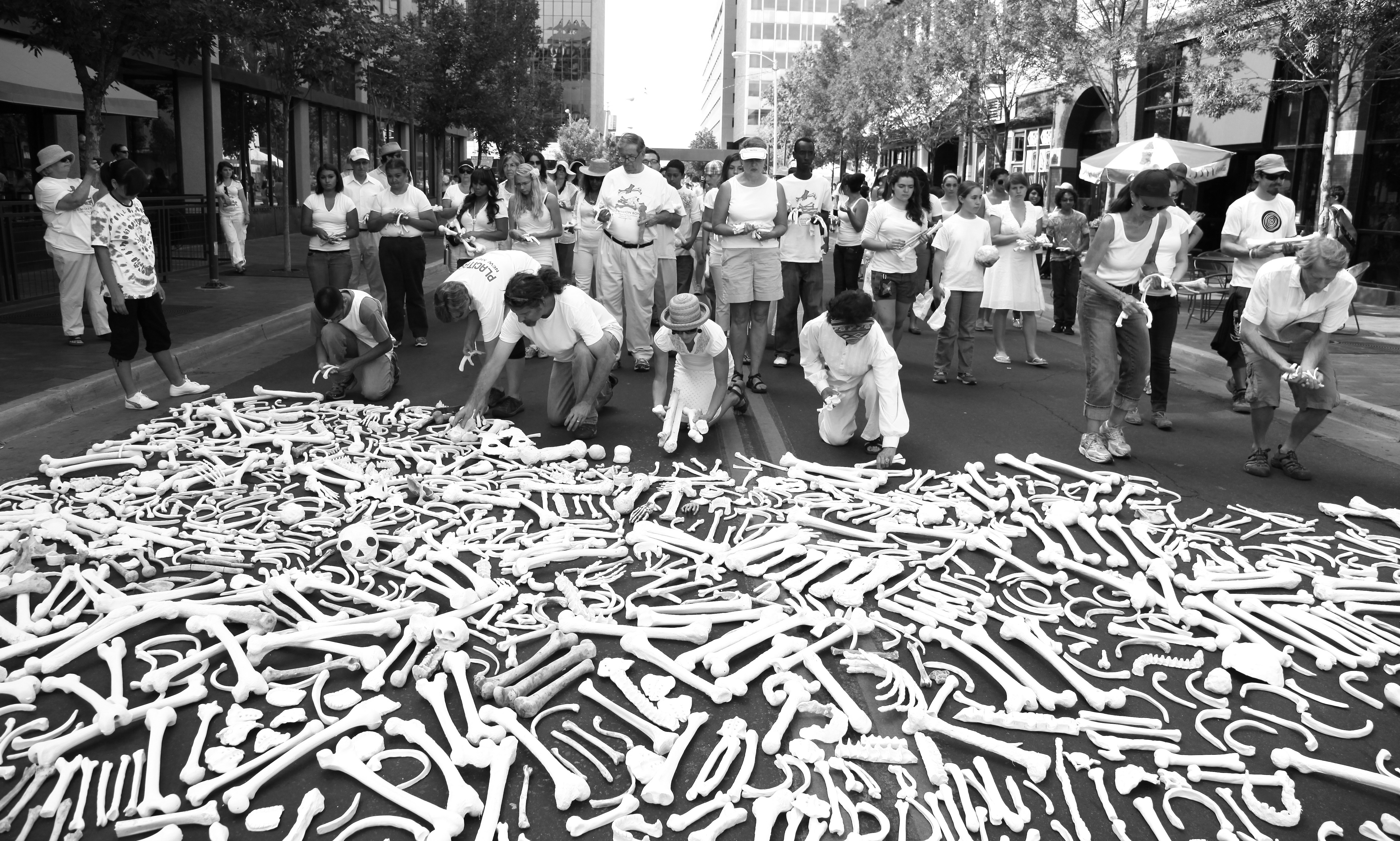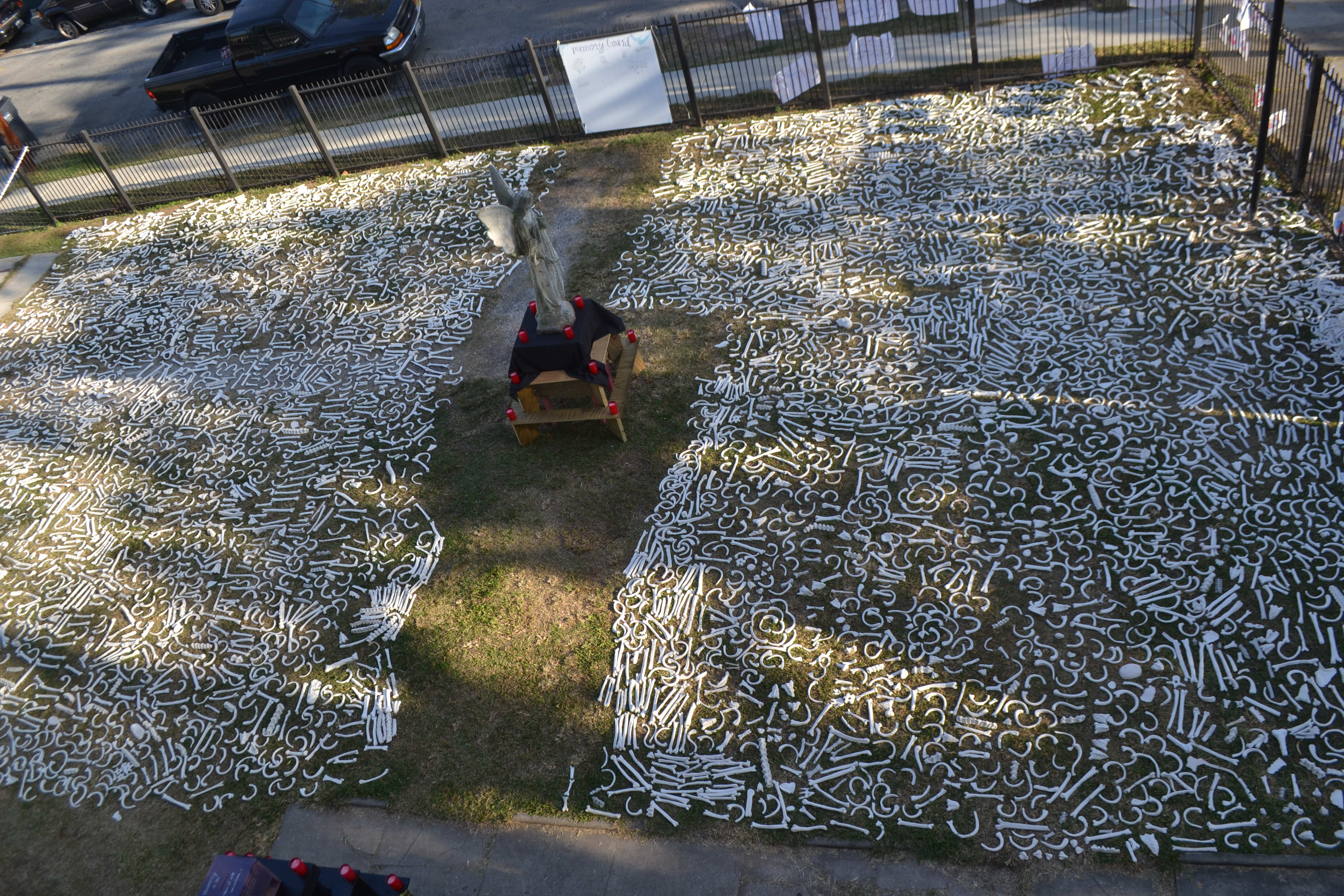


On June 8, 2013, approximately 2,500 volunteers from across the United States gathered on the National Mall to lay out 1,018,260 handcrafted bones as a visible petition against on-going genocide and mass atrocities. The installation of the bones was the highlight of a three-day event that included speakers from across the anti-genocide movement, a candlelight vigil, educational activities and an advocacy day.
The five year process that led to this weekend included two preview installations of 50,000 bones, one in Albuquerque and one in New Orleans; hundreds of small, local installations in schools and communities and a one day event with thirty four simultaneous installations in thirty three state capitals. The bones were made by well over 150,000 participants from all fifty states and thirty countries. Through an incentivized partnership with Students Rebuild, we raised over $500,000 for CARE’s work on the ground in the Democratic Republic of the Congo and Somalia, and over $7,000 for Enough’s advocacy work.
An important aspect of the project was to raise awareness about the crises happening in the Democratic Republic of the Congo, South Sudan, Sudan including Darfur, Myanmar, Syria and Somalia. Over the course of the project, and as a result of the final installation, over 400 media hits were earned. These articles, blogs, radio and television mentions were in venues large and small and as varied and diverse as The Washington Post, Mother Jones, The Huffington Post, South China Morning Post, The Bangor Daily News, San Francisco Chronicle, Kansas City Star, and dozens more.
Our partners in the anti-genocide movement provided us with solid information on the crises, with advocacy opportunities over the life of the project and a remarkably successful Advocacy Day during the event. The Act Against Atrocities Advocacy Day saw 200 people participating in ninety-seven meetings on Capitol Hill.
Our best estimates lead us to believe that we have worked with approximately 150,000 individuals, a majority of whom were students, elementary school through college. We found that teachers/educators were some of the most extraordinary community organizers and activists that we met and we believe that bringing them to the table with the anti-genocide movement was one of the most important results of the project.
Many of these teachers went on to involve other teachers in their schools and districts, create community installations of the bones their students made, sought press for the work their students had done and the issue of genocide. This was the case of Jane McPherson, an educator and doctoral candidate at Florida State University who galvanized the FSU community as well as the entire city of Tallahassee producing 23,000 bones during the 117 workshops and events that she organized. The project allowed her to share her emotional connection with the issue with hundreds of other people. Jane shared her thoughts in a blog and we excerpt a small piece here:
“For the previous 20 months, my own life had been consumed by Bones. As the project organizer in Florida, I threw myself into planning events, recruiting volunteers, speaking to groups, and supervising the making, counting, and firing of over 23,000 bones. My house became a mausoleum, and we joked that our children lived in an ossuary.
Why did we all feel so passionately about this unlikely vision? On the simplest level, the spectacle of one million bones on the Mall was meant to be beautiful and arresting. Indeed the sight was breathtakingly beautiful, but it was painful as well. Laid out as they were on our national lawn, the bones were intended to invoke a collective sense of national responsibility. They were meant to provoke questions: To whom do these bones belong? What role does U.S. policy play in the lives and deaths of the individuals represented by these haunting symbols? As citizens and voters in the United States, what is our responsibility to victims of mass violence? What can I do to help?”
 In other cases, the project created an awareness of an unimaginable issue, provided learning and action, which led to more and deeper action. This was what we saw in New Orleans where two students, Dana Nguyen and Emily Gatehouse, who came to the project through Tulane University as interns, became so invested in it that after the 50,000 Bones preview installation in that city, they continued on with the work. On their own they went into over 50 schools and developed strong student relationships, they then organized an event that was called, 10,000 Bones Local to Global, which was a three day interfaith vigil held at St. Anna’s church that included workshops and community meetings with parents who had lost their children to violence in the city alongside Sudanese refugees living in New Orleans.
In other cases, the project created an awareness of an unimaginable issue, provided learning and action, which led to more and deeper action. This was what we saw in New Orleans where two students, Dana Nguyen and Emily Gatehouse, who came to the project through Tulane University as interns, became so invested in it that after the 50,000 Bones preview installation in that city, they continued on with the work. On their own they went into over 50 schools and developed strong student relationships, they then organized an event that was called, 10,000 Bones Local to Global, which was a three day interfaith vigil held at St. Anna’s church that included workshops and community meetings with parents who had lost their children to violence in the city alongside Sudanese refugees living in New Orleans.
We share these stories here to illuminate what this work actually looked like in the world and to honor every single person whose participation and experiences made it what it was.
